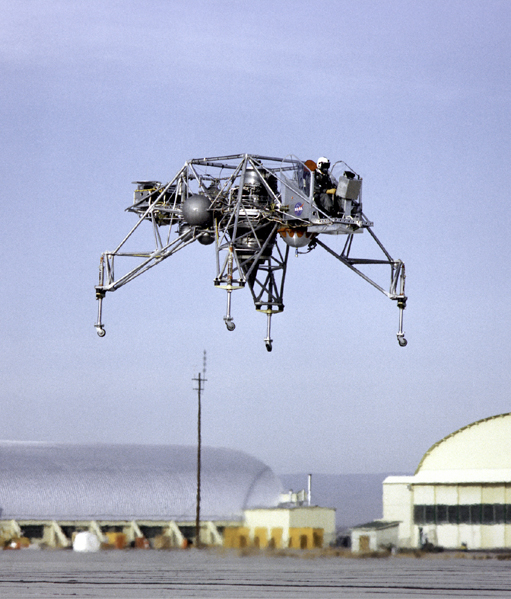Space History Photo: Lunar Landing Research Vehicle in Flight

In this historical photo from the U.S. space agency taken in 1964, the Lunar Landing Research Vehicle (LLRV) Number 1 flies at the South Base of Edwards Air Force Base.
When Apollo planning was underway in 1960, NASA was looking for a simulator to profile the descent to the moon's surface. Three concepts emerged: an electronic simulator, a tethered device, and the ambitious Dryden contribution, a free-flying vehicle.
All three became serious projects, but eventually the NASA Flight Research Center's (FRC) Landing Research Vehicle became the most important.
Each weekday, SPACE.com looks back at the history of spaceflight through photos (archive).
Get the Space.com Newsletter
Breaking space news, the latest updates on rocket launches, skywatching events and more!
Join our Space Forums to keep talking space on the latest missions, night sky and more! And if you have a news tip, correction or comment, let us know at: community@space.com.

The National Aeronautics and Space Administration (NASA) is the U.S. government agency in charge of the civilian space program as well as aeronautics and aerospace research. Founded in 1958, NASA is a civilian space agency aimed at exploring the universe with space telescopes, satellites, robotic spacecraft, astronauts and more. The space agency has 10 major centers based across the U.S. and launches robotic and crewed missions from the Kennedy Space Center in Cape Canaveral Florida. It's astronaut corps is based at the Johnson Space Center in Houston. To follow NASA's latest mission, follow the space agency on Twitter or any other social channel, of visit: nasa.gov.









